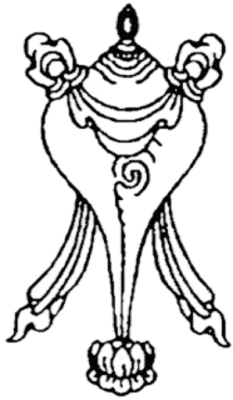SHANKA

SHANKA Shanka in Sanskrit, the conch shell has survived as the original trumpet since time immemorial. It is also an Buddhist ‘Ashtamangala’ symbol. Ancient Indian epics describe how each hero of mythical warfare carried a mighty white conch shell. It is one of the main emblems of Vishnu and his conch called ‘Panchajanya', meaning 'having control over the five classes of beings. Arjuna's mighty conch was known as Devadatta. It is an emblem of power, authority and sovereignty whose blast is believed to banish evil spirits, avert natural disasters and scare away poisonous creatures. The conch is used in Buddhism to call religious assemblies and rituals. Ancient Indian belief the thicker-shelled bulbous one is thought to be the male ‘purusha’ and the thin-shelled slender conch to be the female ‘shankhini’. The smooth white conch represents the brahmin, the red the kshatriyas, the yellow the vaishyas and the grey conch the shudras. Conch shells are also divided on the bas...